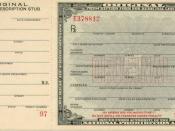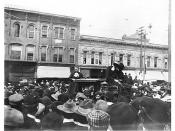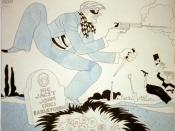Thirteen-year period of prohibition. 1920-1933
First of all prohibition means, the act of prohibiting or the condition of being prohibited, or al law, order, or decree that forbids something. Prohibition in the 1920s was when alcohol sale, transportation, manufacturing, and possession were forbidden in the United States. The goals of prohibition were to, 1 reduce the consumption of alcohol, 2 reduce crime, corruption, poverty, death rates, solve social problems, reduce the tax burden created by prison and poor houses and improve health and hygiene in America. 3 improve the economy and the quality of life.
Prohibition did not achieve it goals instead it added to the problem it was intended to solve. The problem with prohibition was that it was unenforceable, increased the amount of alcohol consumption (desired and sold), and it also caused the explosive growth of crime.
On January 16, 1920, one of the personal habits and customs of most American suddenly came to halt.
The eighteenth amendment was put into effect and all importing, exporting, transporting, selling, and manufacturing of intoxicating liquor were put to an end. Shortly following the enactment of the eighteenth amendment, the national prohibition act, or the Volstead act as it was called because of its author, Andrew J.Volstead, was put into effect. This determined intoxicating liquor as anything having an alcoholic content of anything more than 0.5 percent, omitting alcohol used for medicinal and sacramental purposes.
The prohibitionist hoped that the Volstead act would decrease drunkenness in America and thereby decrease the crime rate, especially in large cities. This, however was undoubtedly to no avail. Although towards the beginning of prohibition this purpose seemed to be accomplished, the crime rate son skyrocketed to nearly twice that of the pre-prohibition period. In large cities the homicide went from 5.6 (per 100,000...


